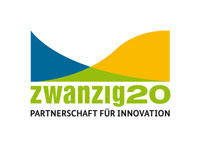The Sensegrity project is part of a larger research context in which reactive materials such as Piezos and Shape Memory Alloy SMA are observed, categorised and prepared for low access use. The Constitute got involved into the process through a competition focusing by the Smart3 network on experimental and analytic use of SMA springs.

Within a nearly 2 year developing process we created a transforming light sculpture based on the functionality of Shape Memory Alloy (SMA) springs to visualize this new materials capabilities in design processes. Buckminster Fullers Tensegrity structures have been inspirational source to the form finding process. By using the internal concept of Tensegrity structures to allow tension and integrity we found a base to develop a dynamic shapeshifting system. To get a deeper understanding on the diversity of Tensegrity and rod-string structures we build models in various scales. Beside the epistemological effect of understanding dynamic structures, the objects are just beatiful examples of how naturals and constructive structures aestehtically appear and basically work.


Voltage reactive metal springs shorten distances between single structural elements and effect the shape of the whole object. We kept the basic structural elements of Tensegrity objects. The stiff rod elements have been replaced by illuminated acrylic rods and inserted into the SMA spring corpus that we named nucleus. The outer ends of the acrylic rods are linked with elastic bands which are creating a three-dimensional shape. The geometric transformation of the sculpture is achieved by the thermal activation of the shape memory alloy. The light sculpture consists of four segments, each composed of two SMA springs, an acrylic rod and hold by the nucleus. By the use of a control loop, the SMA elements are heated up electrically until the SMA contraction is activated. This contraction is responsible for the linear motion of the acrylic rods which are responsible for the geometric transformation.
The Project is a result of the cooperation with the Smart3 Innovation Network and the IWU Fraunhofer Institute Dresden. The object itself is displayed at the Fraunhofer HQ in Dresden.



